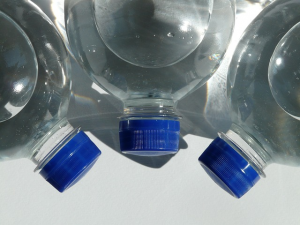 Since the 1950’s, the use of Bisphenol A in plastics, resins, and food containers has steadily risen with little regard towards the possible consequences. As of now, over 4 million tons of BPA are produced every year, and we’re just beginning to understand the many ways this chemical can harm our bodies, and the environment.
Since the 1950’s, the use of Bisphenol A in plastics, resins, and food containers has steadily risen with little regard towards the possible consequences. As of now, over 4 million tons of BPA are produced every year, and we’re just beginning to understand the many ways this chemical can harm our bodies, and the environment.
The greatest concern lies in the chemical’s ability to mimic estrogen in the human body, causing harm to sexual organs and reproductive health. However, these hormones can effect every cell and tissue in your body, so there’s no telling how far reaching the damage may be. In various animal studies conducted over the years, it’s been shown to cause brain damage, premature pubescence, abnormal growth of sexual organs, breast cancer, prostate cancer, and miscarriages.
So if BPA can cause these terrible symptoms in animals, how worried should we be? Just how common is BPA in our environment, and is our regular exposure enough to damage our health?
While the scientific community has yet to come to a consensus on the effects of BPA in humans, there is no doubt that it has become incredibly pervasive in our environment. Between 90 and 95 percent of all Americans have tested positive for BPA, and it’s become almost impossible to avoid exposure in the United States. BPA is used in the production of many different kinds of plastic and epoxies, so trying to avoid BPA in the modern world is like trying to avoid water on a life raft.
Fortunately it is possible to significantly reduce your exposure. It’s simply a matter of knowing what products contain it, and cutting back on those products that you don’t really need. Take a look at this list of items that contain BPA. Brace yourself though, it’s a shockingly long list with a few items you may not have been aware of.
- Thermal paper products, like receipts, labels, plane tickets, lottery tickets, and by extension certain recycled products like paper towels and toilet paper.
- Beware of any foods or drinks that are stored in tin or aluminum cans. BPA is usually present in the lid seal or the thin inner lining of the container (usually invisible to the naked eye) . But above all else, avoid canned tomatoes. Their acidic nature has a strong tendency to leach BPA from cans.
- Plastic water bottles
- Any hard plastic container built from polycarbonate (avoid heating any plastic material in the microwave, even if it says that it’s microwave or oven safe. Heat breaks down BPA and concentrates it into your food).
- Disposable cups, plates, and utensils
- Baby formula, especially the premixed liquid kind. Powdered formula usually contains less BPA (as a rule of thumb, liquids are far more prone to absorbing BPA than solids).
- Just like aluminum cans, aluminum water bottles often contain an invisible epoxy lining that sometimes carries BPA
- Certain dental fillings and sealants
- Avoid unfiltered tap water. BPA has been known to find its way into many of America’s waterways, usually through contact with trash and pollution.
Like I said before, BPA is not easy to avoid. Much like lead in the early 20th century, BPA is a toxic substance that has found its way into our everyday lives. It’s going to take years of research and awareness before manufacturers are forced or convinced to remove this harmful substance from their products. And even then, you must be wary of supposed “BPA Free” products that often contain similar chemicals. Until then, you can use this list to help reduce your exposure to this insidious and pervasive toxin.
This article was originally published at Ready Nutrition™ on December 14th, 2014






